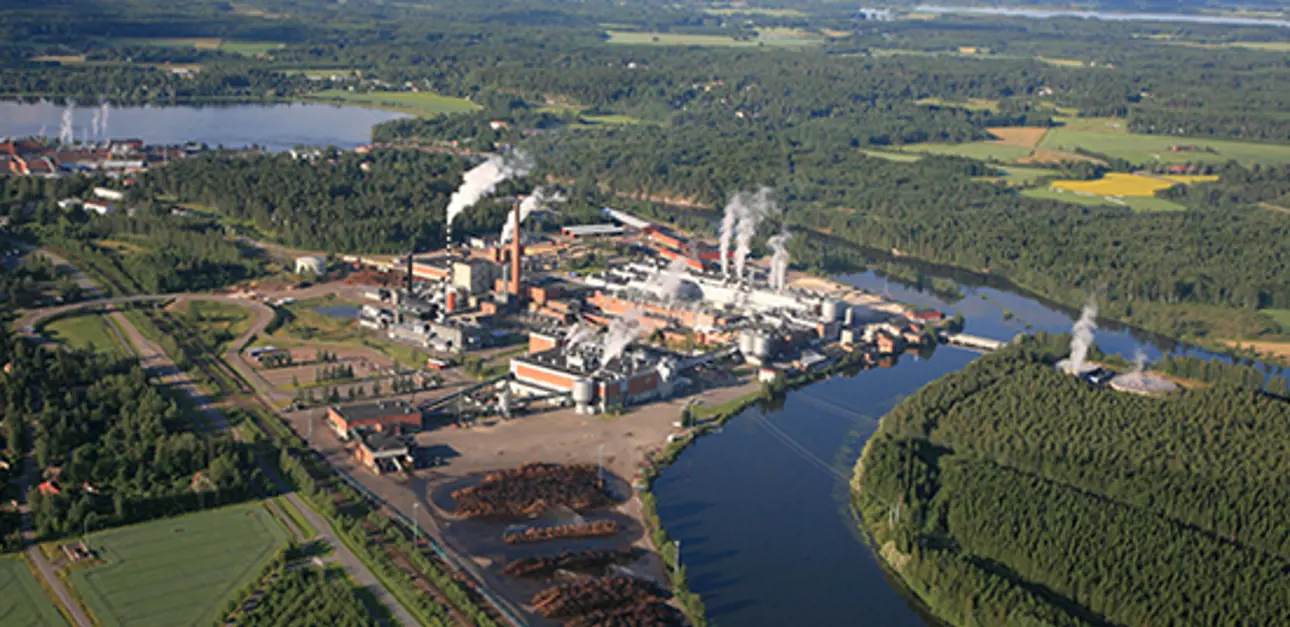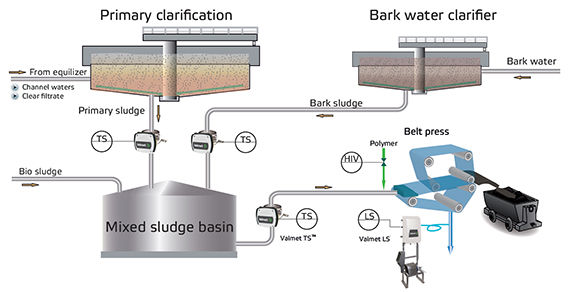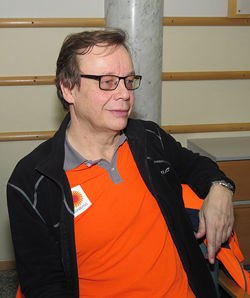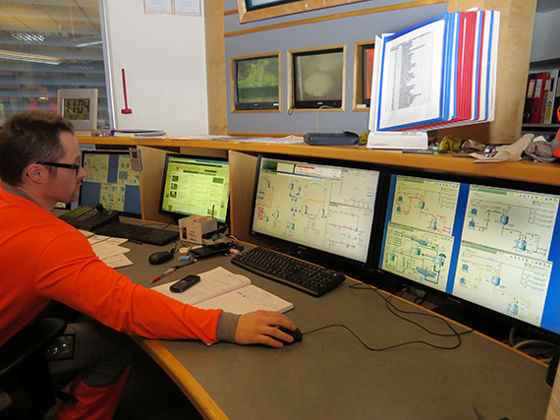On-line measurement with laboratory accuracy
The Anjalankoski Mill area is home to two of Stora Enso's production units, the Anjala Paper Mill, as well as the Inkeroinen Board Mill. Cooperative efforts between the mills cover raw materials, energy and power generation, as well as waste water treatment and resultant sludge drying and firing. The Anjala paper mill together with the wastewater treatment plant has a long history of equipment supplied by Valmet *) measuring sludge prior to drying and solids content of reject water. Earlier, the only possible reliable measurements were tedious laboratory tests unsuitable for real-time process control.

Environmental values are the priority
For all industrial production, protection of the environment currently functions as the guideline to operating conditions with compliance to permitted values. The pulp and paper industry is one of the most closely regulated and controlled industries in the world. The allowable limits generally require best available technology (BAT) for process measuring and control technology as well as for manufacturing processes.
For water protection, effective waste water treatment and the recovery of harmful substances is of paramount importance. The large volumes of water (for Anjalankoski around 30,000 m3 per day), low solids content and contamination of measuring devices create special challenges for reliable real-time measurements. Traditionally, the only way to manage this process was by laboratory analysis which made rapid corrective control actions impossible. Valmet *) has developed a measurement technology to address these challenges. These measurements now provide real-time process values in the extreme conditions of the effluent treatment plant.
Measuring solutions in Anjala’s waste water treatment
The specific need of the Anjalankoski mills was to get real-time information on flows from clarifiers and to sludge dewatering, as well reject water solids content from the belt press filter.
Valmet TS (Total Solids) *) transmitters have been measuring the dry matter content of clarifier sludge in Anjalankoski since 2010. The transmitter measures the time of flight of a microwave signal through the sludge. Time of flight is dependent on the permittivity of the slurry which for organic substances is practically constant, whereas the permittivity of water is considerably different. The measured change in permittivity allows an accurate calculation of the total solids content in the slurry. The measured slurry consistency varies normally from 2 to 3 per cent.
The Valmet LS (Low Solids) *) - measuring system is designed to measure very low, 0 - 5000 mg/liter, solids content. The Anjalankoski system was installed in 2011 to measure the solids content of the reject water leaving the belt press filter, which had normally varied between 2000 to 5000 mg/liter. The device utilizes two light sources in a sample measurement cell where absorption, scattering and depolarization signals are measured.. The system also deaerates and filters the sample as well as self-cleaning the measurement optics at regular intervals.

Simplified diagram of the sludge drying at the Anjala paper mill wastewater treatment plant.

Comparison to laboratory results.
Anjalankoski mill experience
 |
|
|
Pertti Rongas |
Pertti Rongas, Department Manager, is particularly pleased with Valmet TS-measuring devices *) capability to provide accurate measurement data. "The results have been compared to laboratory tests and match them perfectly. The transmitters are reliable and do not require much maintenance. I wonder how, for example the primary clarifier could be run efficiently without such a measurement?" The improved measurements should make it possible to control the process automatically, but experienced operators are needed to follow the values in order to take appropriate action. If, for example, the sludge from the clarifier has a downward consistency trend, it could be the sign of a sludge dam forming at the bottom of the clarifier requiring sludge removal.
The LS-system helps avoid excessive solids content in the belt press reject water which would normally circulate unnecessarily over and over again through the plant. The online measurement allows accurate monitoring and the current target is to keep the solids content to less than 350 mg/liter, whereas earlier it was much higher.
Improved polymer dosage and plant operation

The operators can now optimize the sludge intended for combustion by adjusting polymer addition and belt press speed. Polymer dosage depends on the amount of slurry mixture and solids volume. A higher relative proportion of primary sludge reduces the need for polymer. Sludge is removed from the press at about 30-35 per cent prior to thermal drying and firing.
With reliable measurement technology, plant operation has improved even though dried sludge volume has increased by about 15 percent since 2011. Real-time measurement results have significantly improved both the polymer dosage control and plant operation.
*) product and company names changed from Metso to Valmet. Valmet acquired Metso’s Process Automation System business and products on April 1st 2015.
Related articles




